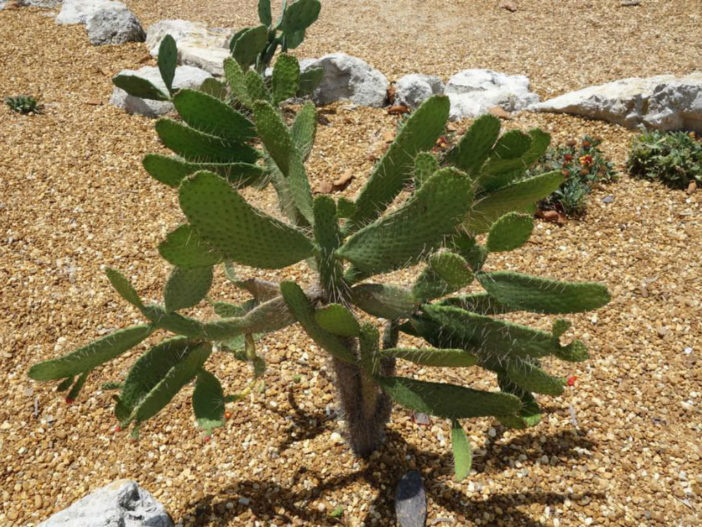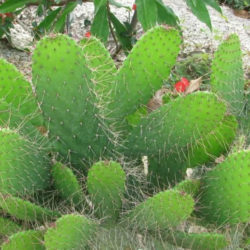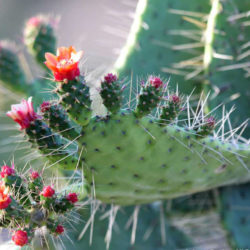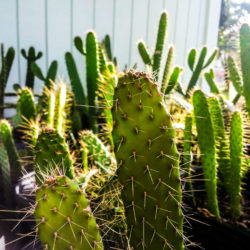Scientific Name
Consolea corallicola Small
Common Name(s)
Florida Semaphore Cactus, Semaphore Pricklypear
Synonym(s)
Consolea millspaughii subsp. corallicola, Consolea spinosissima subsp. corallicola, Opuntia corallicola
Scientific Classification
Family: Cactaceae
Subfamily: Opuntioideae
Tribe: Opuntieae
Genus: Consolea
Description
Consolea corallicola is a rare, tree-like cactus with a cylindrical trunk and flattened, segmented branches armed with needle-like spines. It grows up to 8 feet (2.4 m) tall. The branch segments (pads) are up to 16 inches (40 cm) long, 4 inches (10 cm) wide, and 0.4 inches (1 cm) thick. The areoles are arranged in 10 or more rows. Each areole bears 5 to 9 spines up to 5 inches (12.5 cm) long. The spines on branches are smaller and more flexible than those on the trunk. The common name "Florida Semaphore Cactus" refers to its resemblance to railway semaphore signals.
Flowers are bright red with numerous stamens and appear year-round. They are up to 1 inch (2.5 cm) long and nearly equal in diameter. The spiny fruits are yellow, fleshy, egg- to club-shaped, and up to 2.4 inches (6 cm) long.
Origin
Consolea corallicola is endemic to Florida in the United States, limited to the Florida Keys. It grows on bare rocks with only slight humus covering in hardwood hammocks near sea level.

Hardiness
USDA hardiness zone 10a to 11b: from 30 °F (−1.1 °C) to 50 °F (+10 °C).
How to Grow and Care
Though the large variety of species within the Opuntia genus means different types of prickly pears may need slightly different care, all are desert cacti that need lots of sun, lots of light, and very little water. Therefore, if you live in a hot, arid area, particularly the American Southwest, these plants can generally be planted outside, left alone, and enjoyed.
Though Opuntia will grow just fine in a garden, they can also be grown in pots. To repot, ensure the soil is dry, remove the pot, and remove the old soil. After treating any cuts with fungicide, place the prickly pear in a new pot and backfill it with potting soil. As with a new cutting, ensure not to water a newly repotting prickly pear briefly to avoid rotting its roots.
See more at How to Grow and Care for Opuntia.
Links
- Back to genus Consolea
- Succupedia: Browse succulents by Scientific Name, Common Name, Genus, Family, USDA Hardiness Zone, Origin, or cacti by Genus
Photo Gallery
Click on a photo to see a larger version.


